Retailers face an ongoing problem. What makes for effective retail marketing changes all the time.
Cultural and societal shifts influence how consumers see brands. Consumer expectations seem to always be rising. For instance, 63 percent of consumers say they expect retailers to understand their unique needs and expectations.
All of this means you need to be on your game. Move with the shifts, meet expectations, and make sure you use the most effective retail marketing strategies.
Here, you’ll learn the best retail marketing strategies for 2022 and beyond. And, of course, I’ll share some top-notch examples of these strategies in practice to help you figure out how to implement them.

Table of Contents
What Is Retail Marketing?
Traditionally, retail refers to a particular process in which product manufacturers sell to wholesalers that sell to retailers that sell to consumers. Sometimes there are even more middle people involved, such as third-party distributors.
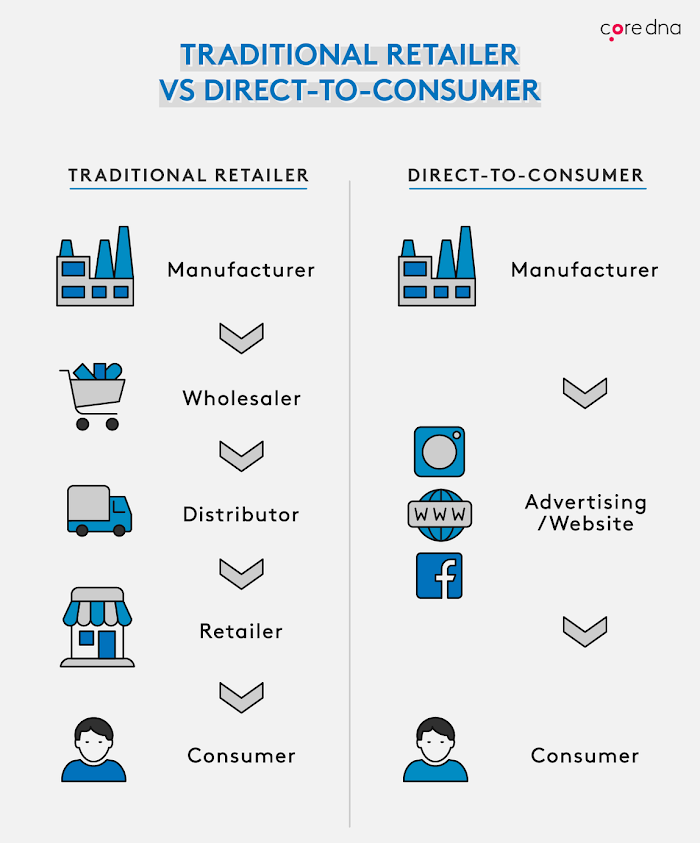
This means traditional retailers are those that sell wares from other brands. For example, Foot Locker is a retailer that sells Adidas and Nike shoes.
However, we tend to use “retail” as more of an umbrella term that encompasses different kinds of companies these days.
In essence, retail marketing refers to the ways retailers promote the products in their catalog and encourage customers to buy them. Whether they’re selling out of a store, online, or both. Or, whether they’re marketing other brands’ products, their own, or both.
The Pillars of Retail Marketing
Think of the main elements of retail marketing in terms of the 4 Ps. These are:
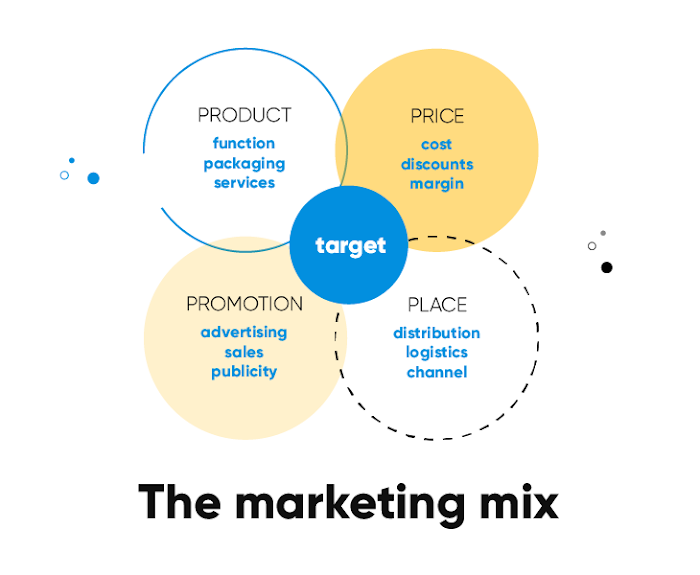
- Product. As a retailer, you may not be responsible for producing your own products. Either way, your catalog of products is important to the consumer. Products go in and out of fashion. Certain brand names are important to certain audiences, and so on. Even the way you package products matters.
- Price. The way in which you price your products has a significant impact. Different price ranges appeal to different demographics. Some are looking for brands that they perceive to be good value for money, for instance, and that kind of thing will play into how you market your store and the products you stock.
- Place. Where consumers can find the goods you sell is key. This may mean a physical location, online store, social media channel, etc. It may also refer to the way you distribute products.
- Promotion. This is about the way you raise awareness for your store, as well as how you market to customers and communicate with them across the customer lifecycle. There are, naturally, a ton of different ways to promote your retail business.
Types of Retail Marketing
The way in which you market your store usually depends on two aspects: (1) what resources you have and (2) what your audience responds to. The types of retail marketing usually fall into the following categories:
- In-Store. If you have a physical store, you’ll need to make use of the space and interactions with customers. Examples of in-store marketing include things like handing out samples and creating appealing displays.
- Offline. If it makes sense for your customers, you may wish to market to them outside of the physical location. This refers to tactics such as sending out direct mail and encouraging referrals.
- Online. Every business needs a digital presence, online retailers, brick-and-mortar stores, and those with both. Examples are social media, SEO, email newsletters, and so on.
Now we’ve got the basics out of the way, let’s get on to the cutting-edge stuff.
6 Best Retail Marketing Examples
1. Increase Sales with Shoppable Content
Use social commerce to sell to users where they spend their time. Social shopping is on the rise as it's convenient. Consumers can easily and quickly make purchases where they look for product inspiration, i.e., on Facebook, Instagram, and the like.
The first thing to do is figure out where to best reach your target audience. Different demographics prefer different social media channels. For instance, the largest age group on Instagram is 25-34 years (31.2 percent). Then make your content on the channel shoppable, as Gap does in this example:
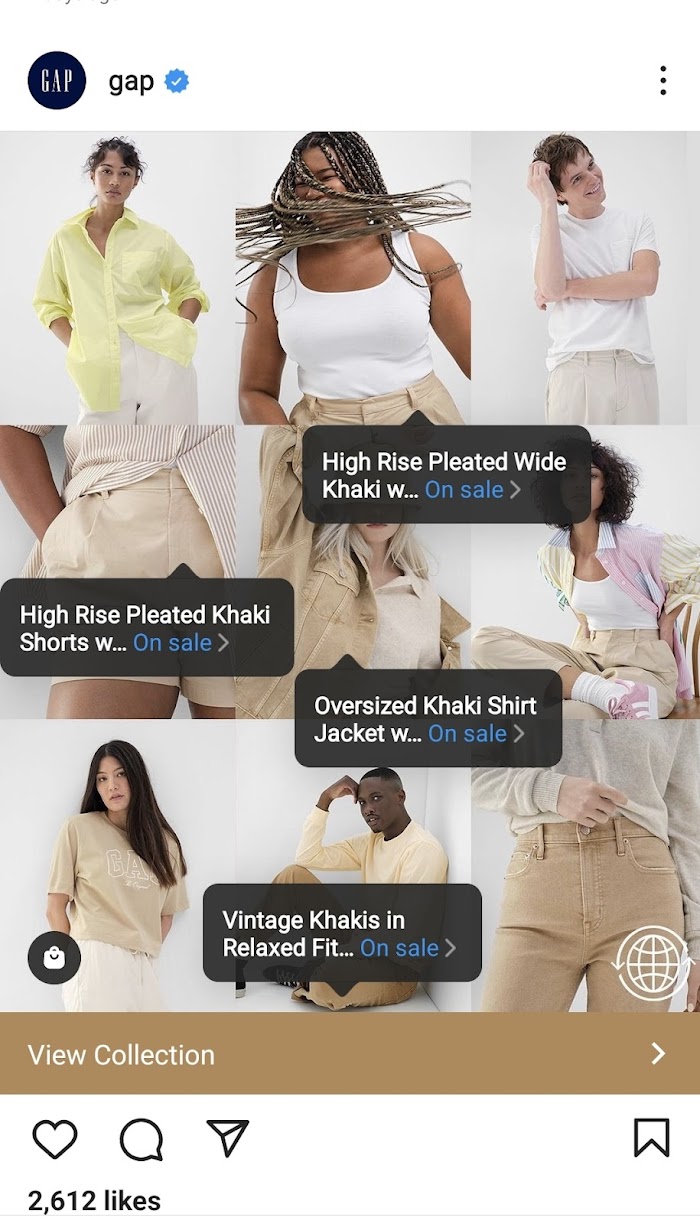
Live commerce is an even more advanced approach, which has gained a lot of traction in China. This is where you enable audiences to make purchases during live streams, through reaction buttons, for example.
In 2018, Kim Kardashian sold 15,000 bottles of KKW fragrances in China via a live stream. Other brands have since experimented with the strategy. Here you can see a screenshot of a live stream from fashion retailer Monki:
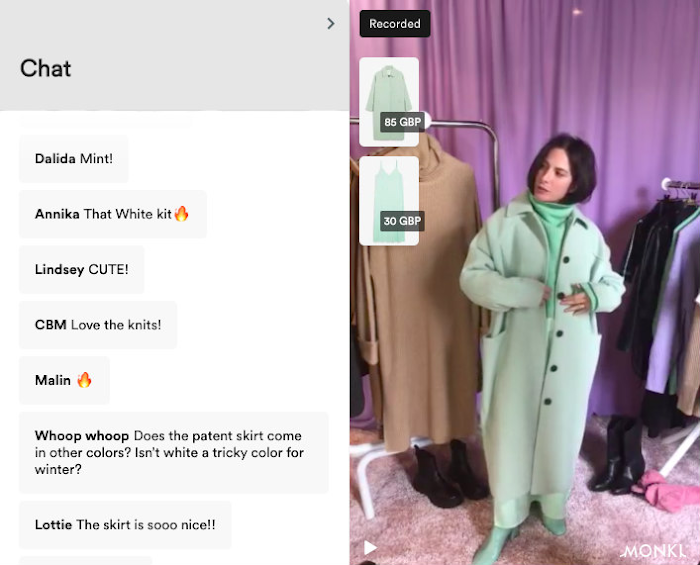
The stream featured the brand’s fashion editor and a buyer chatting about fashion trends and top products. As you can see, viewers were able to buy the items they discussed by simply clicking on the relevant button.
2. Give Your Brand a Mission
Draw in customers with a mission they care about and/or can relate to. Consumers care more about the world around them these days and what brands are doing to drive social change.
So-called “conscious consumerism” is an enormous trend. Though, what’s strange is that many retailers have realized this extremely late or still don’t believe it’s a thing.
A recent study showed that two-thirds of consumers are willing to pay more for sustainable products. Yet, at the same time, two-thirds of retailers didn’t believe this was the case.
IKEA, for example, has been notoriously bad on this front for a while. Eco-conscious consumers dislike the company’s deforestation and concept of throwaway furniture.
So, how do you solve a problem like IKEA? IKEA created a buyback and resell service in which customers can recycle IKEA products.
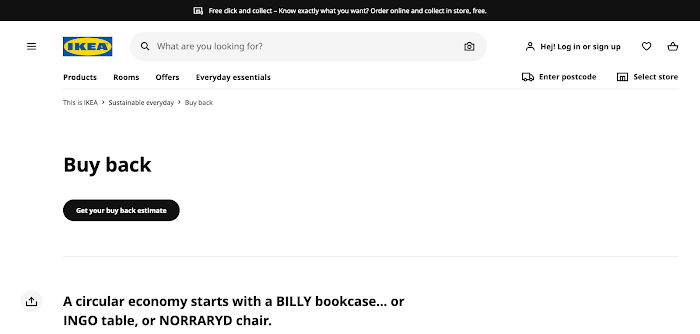
The company has also included sustainability in its messaging. For instance, TV ads in which kids recycle their trash in IKEA storage boxes. Also, with online content:
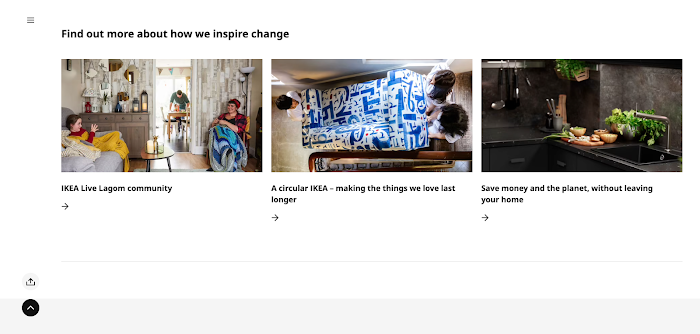
The point here is that if you don’t get on board with what your customers care about and express as much in your marketing materials, your brand will soon go out of fashion.
3. Don’t Underestimate the Impact of Email Newsletters
Use email newsletters to build loyalty and keep customers interested in your company.
Some retailers give up on email newsletters as it can be difficult to measure how they correlate with sales. But that’s just silly!
If used strategically, they’re one of the best ways to engage people and nurture potential customers. B2C content marketers rate email newsletters as the top method to secure and nurture leads.
Remember that the goal of your email newsletter is to encourage subscribers to take action. For instance, to read your latest piece of content, take part in an upcoming event, or buy something from your store.
In this email newsletter, Pura Vida sends out a curated list of the products that are trending:
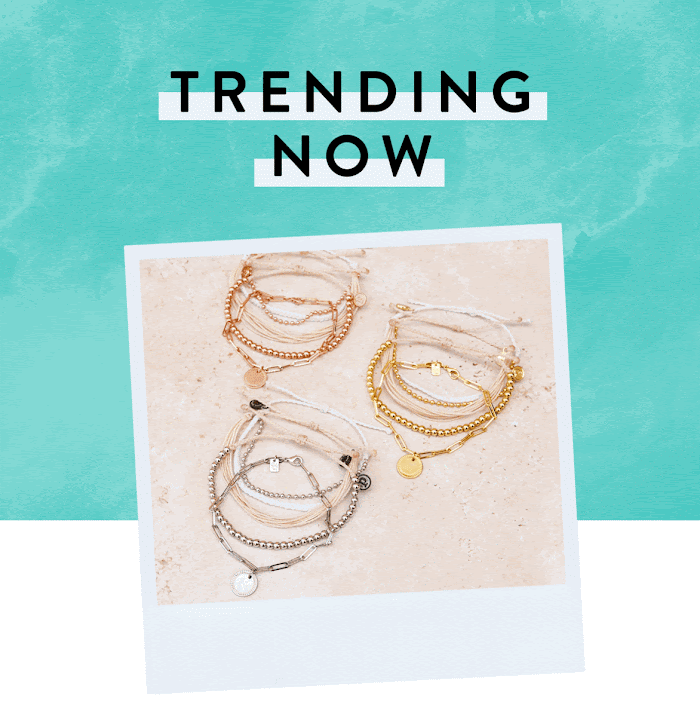
It’s a form of social proof. It might as well say, “Here’s what people are interested in at the moment, so you should be, too.” The newsletter goes on to share recommended products based on the customer’s browsing history.
Newsletters don’t need to be general, with the same content blasted out to everybody. You can and should add elements of personalization.
Here’s another email newsletter example from running apparel company, Sweaty Betty:
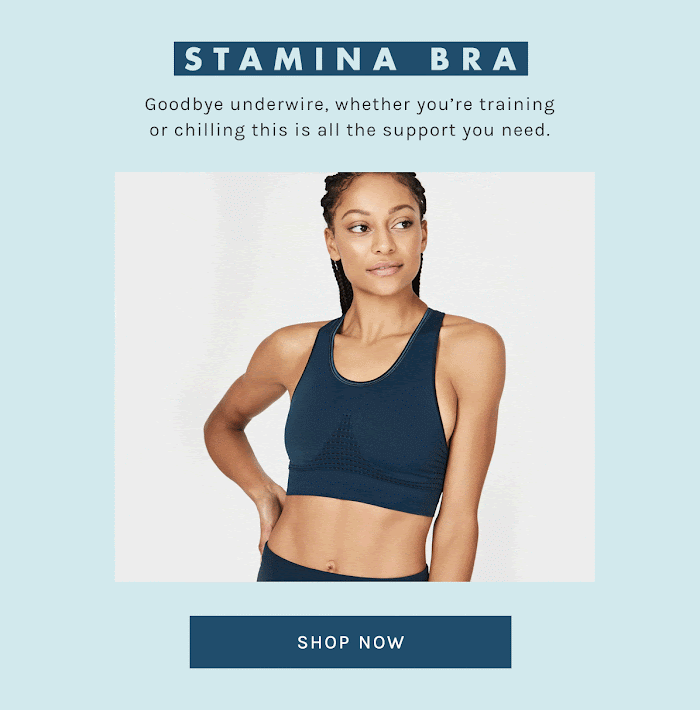
It does a number of things well, including catering to the audience’s key interests in focusing on yoga and Netflix.
You can do the same by honing in on what your customers care about the most and encouraging them to get involved with your brand in some way.
4. Adopt a Hybrid Approach
Combine an online and offline approach to create appealing experiences for customers.
The customer journey continues to include both online research and in-store visits. Given the global pandemic, you’d think there would be a more permanent shift to online commerce.
Yet, consumers are now craving in-person shopping experiences more than ever. You need to cater to that desire as part of your retail marketing strategy.
If you’ve only ever had an e-commerce business, you should consider creating some kind of offline experience, for instance, a pop-up shop or flagship store.
Beauty subscription service Birchbox continues to experiment with in-person experiences. The brand had a flagship store in New York, a pop-up store in London, and is now a regular feature at pharmacy chain Walgreens.
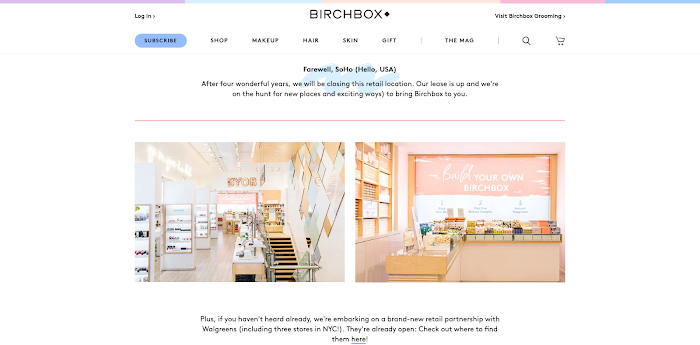
The experience gets customers to build their own Birchbox in real life. It’s a clever way to bring something that was founded online into the real world.
If you want to do something, similar remember the whole point is customers want to be able to feel, see, and try out your products. So you must create a sensory experience that’s right for your brand. Customers also want to see and talk to customer reps in person.
5. Focus on Local and Community Vibes
Emphasize the part you play in the local community to keep customers coming back.
Consumers are increasingly concerned with supporting local and small businesses. So the way you market to these conscious consumers needs to appeal to their values.
Tap into this idea by telling your business’s story, whether you have a large or small brand. Make the idea of being “local” part of your brand’s values and messaging.
To give you an example, Brewdog makes its Scottish roots a big part of its brand story:
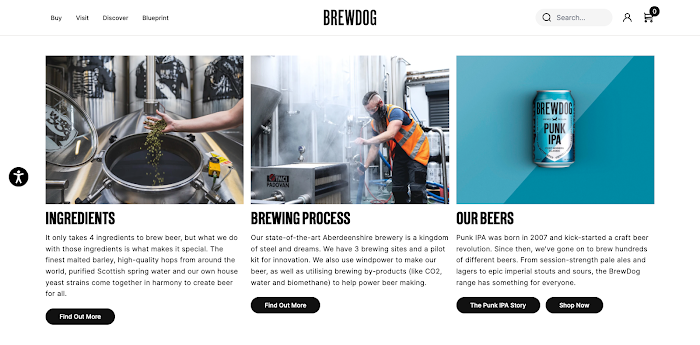
Another great strategy is to make sure your business engages in the local community. This is possible even for big companies.
For instance, Foot Locker’s Atlanta store partnered with an influencer from the city and a local charity to renovate the gym at a local school.
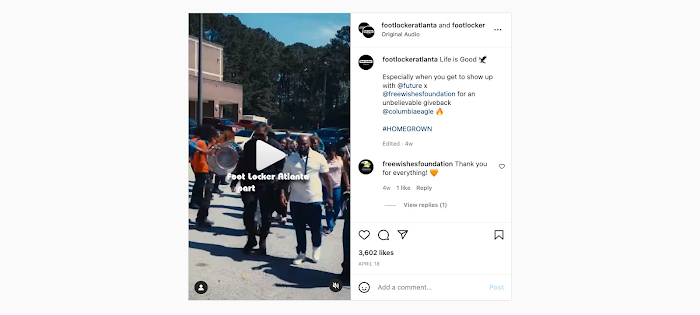
Notice how they shared the story on Instagram with the hashtag #HOMEGROWN. This emphasizes the idea that the retailer knows its roots and is still a part of the local community.
It’s a smart idea to get involved with local charities and run local events. Businesses often sponsor local sports teams and the like, but feel free to think outside of the box.
Seek out local influencers that have a following in the community. Even micro-influencers that don’t have huge followings can extend your reach locally.
6. Partner with other Brands
Collaborate with non-competing brands. You’ll see so much more of this type of thing in the future. So go ahead and jump on that bandwagon now.
Strategic partnerships can help you branch out into new markets and extend your reach within your target audience. High-growth brands are three times more likely to use brand partnerships as part of their marketing strategy.
To get started, you need to find a complementary brand that has similar values to yours. That way, you can develop a campaign that has some meaning, rather than just a random partnership. (Here’s looking at you Adidas and AriZona Iced Tea !?)
Outdoor apparel company FatFace teamed up with bicycle seller Raleigh on a line of clothing and homewares.
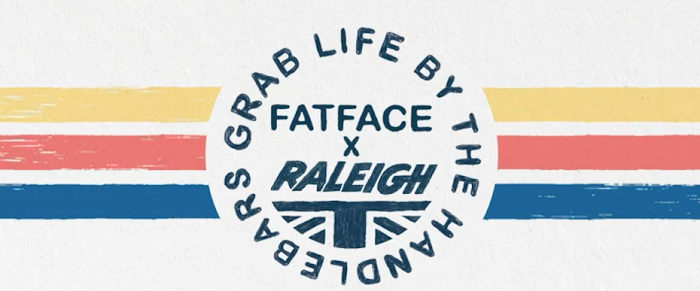
Both brands are enthusiastic about the outdoorsy lifestyle, so it's a partnership that makes complete sense. Plus, audiences of both brands are likely to eat up such a partnership, given their interests in the great outdoors.
Find a relevant brand to partner with by researching your target audience's other favorite companies. You could send out a survey, perhaps, or see which other brands your social media followers also follow.

Final Word
As consumer mindsets shift, so does the kind of marketing that will appeal to them. Whether it’s in-store, online, or a mixture of the two, your approach to marketing needs to place the customer at the center.
So bear in mind the conscious consumer when considering your messaging. Target them on the social channels where they hang out and make it easy for them to buy when the time is right. Personalize your communications and show an interest in your audience’s interests.
Those are the ways you’ll succeed in retail marketing.
What’s next? Figure out how you can take inspiration from these examples and adapt these strategies in a way that makes sense for your company.



